Europe’s new Ariane 6 rocket has finally taken flight, carrying the hopes of the continent on its broad back.
The Ariane 6 was launched for the first time today (July 9), taking off from the European Spaceport in Kourou, French Guiana, at 3:01 a.m. EDT (1901 GMT).
There was a lot riding on this start: It came a year after the retirement of Ariane 6’s predecessor, the workhorse Ariane 5, left Europe able to launch large satellites on domestic rockets.
“Ariane 6 will power Europe into space. Ariane 6 will make history,” Josef Aschbacher, director general of the European Union. European Space Agency (ESA), said through X today before the launch.
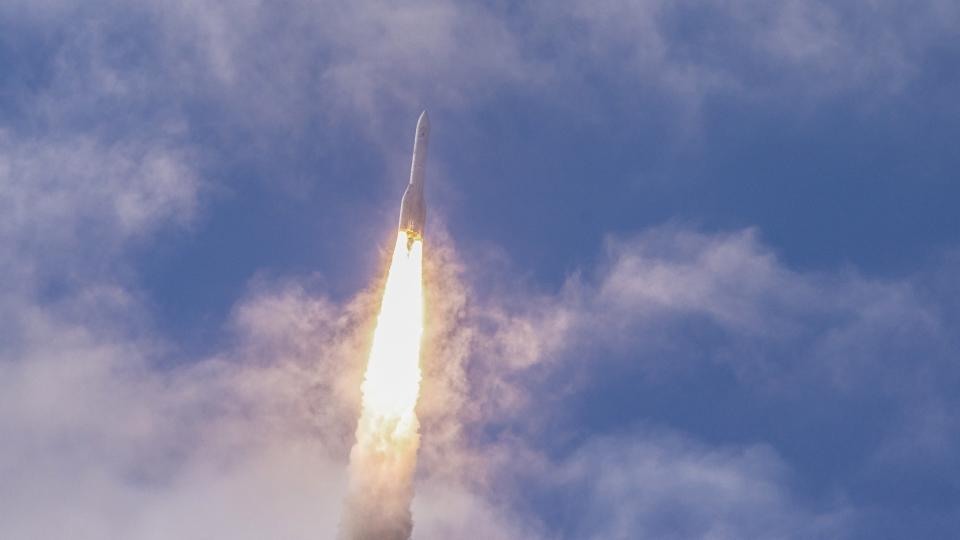
A brand new rocket
Today’s launch was a long time coming. Development of the Ariane 6 began in late 2014, and was originally planned to take place in 2020. But the timeline slipped due to technical issues and external problems, such as the COVID-19 pandemic.
The delays meant that the Ariane 6 did not overlap with the Ariane 5, which flew 117 orbital missions from 1996 to 2023. The retirement of Ariane 5 left Vega, a small satellite launcher, as the only operational orbital rocket in the European stable .
That was unacceptable to European space officials, who don’t want to rely on SpaceX’s workhorse Falcon 9 and other foreign rockets to lift their heavy payloads. So they were eagerly awaiting today’s launch.
The Ariane 6 will ensure “our guaranteed, autonomous access to space – and the scientific, Earth observation, technological and commercial development possibilities associated with it,” ESA officials wrote in a preview of today’s liftoff.
Related: The history of rockets
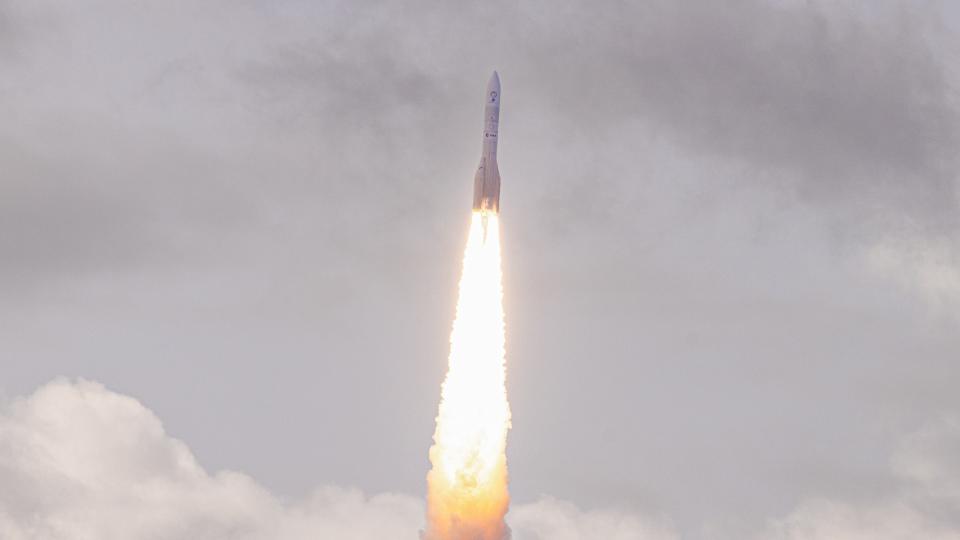

The two-stage Ariane 6 is built by the French company ArianeGroup and operated by its subsidiary Arianespace on behalf of ESA. The first stage of the rocket is powered by a single Vulcain 2.1 engine – an evolved version of Ariane 5’s Vulcain 2 – and the upper stage has a single Vinci engine, which is the new technology. (The Ariane 5 upper stage carried one Aestus or one HM-7B engine.)
The Ariane 6 comes in two versions: the A62, which has two strap-on solid rocket boosters (SRBs), and the A64, which has four SRBs. The A62 and A64 can deliver about 11.4 tons (10.3 metric tons) and 23.8 tons (21.6 metric tons) to low Earth orbit (LEO), respectively, according to ESA.
That latter figure is comparable to the payload capacity of Ariane 5. But the Ariane 6 will do the job for about half the price of its predecessor, thanks to manufacturing improvements and other advances, European officials said.
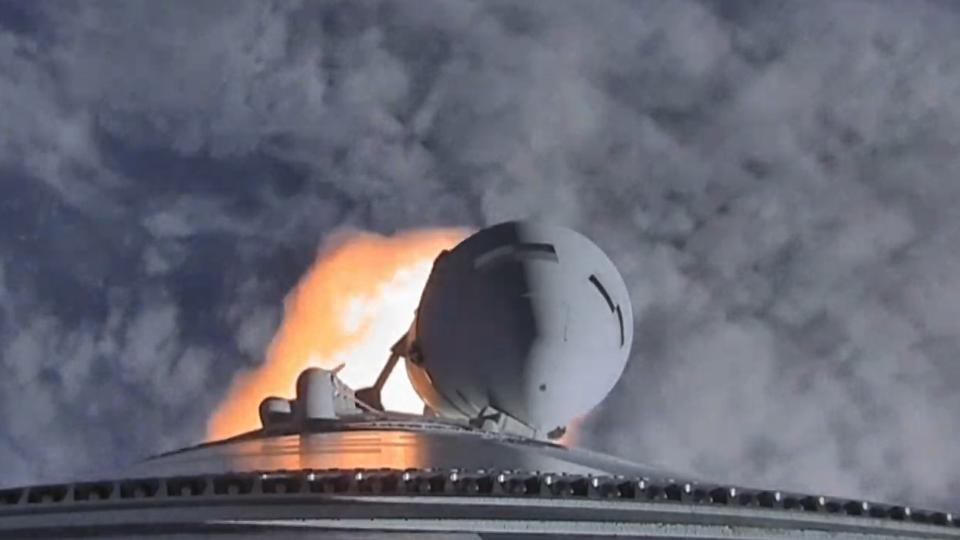

Those prices are murky, though; Arianespace was not forthcoming about its costs per flight, so we only have estimates. Late last year, Ars Technica put the original launch price of Ariane 5 at around 150 million euros ($162 million US at current exchange rates), which would put the target price of the Ariane 6 mission at 75 million euros ($81 million US) .
As Ars noted, that would make the new rocket “reasonably competitive” with the market’s dominant launcher, the Falcon 9, which can be booked for $67 million per flight. But there is more to the story: ESA member states have pledged to subsidize Ariane 6, to the tune of 290 million to 340 million euros ($314 million to $368 million US) per year through 2031 or so. So the actual cost per launch is likely to be much higher than what Ariane 6 customers are paying.
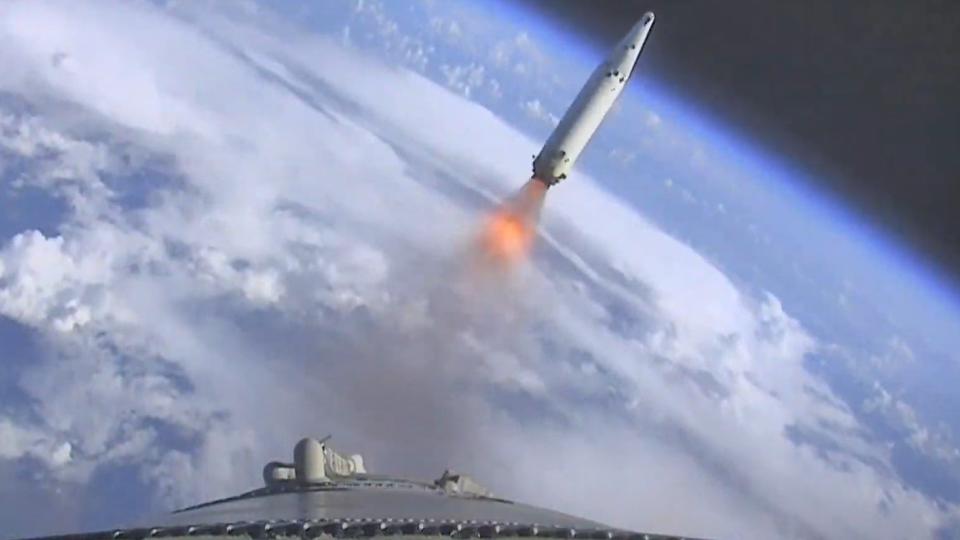

The Falcon 9, as most people know, is partially reusable: its first stage comes back to Earth for recovery, restoration and reflight. But the Ariane 6, like the Ariane 5 before it, is expendable. This design decision makes sense, since the new rocket will likely fly at most 10 or so times per year for the foreseeable future, ESA officials said.
“Our launch requirements are so low that it wouldn’t make economic sense,” Toni Tolker-Nielsen, ESA’s director of space transportation, told SpaceNews recently, referring to reusability. “So we don’t really need it at this point.”
The Ariane 6 has already completed 30 flights, Tolker-Nielsen added, and 18 of these will help create Amazon’s new Kuiper satellite-internet constellation. The new rocket will likely fly one more mission this year, then ramp up to six flights in 2025, eight in 2026 and 10 in 2027, he said.
But that’s getting a lot ahead of ourselves. First, the rocket had to successfully complete its first flight.
Related: Farewell, Ariane 5! Europe’s workhorse rocket launches 2 satellites on final mission (video)
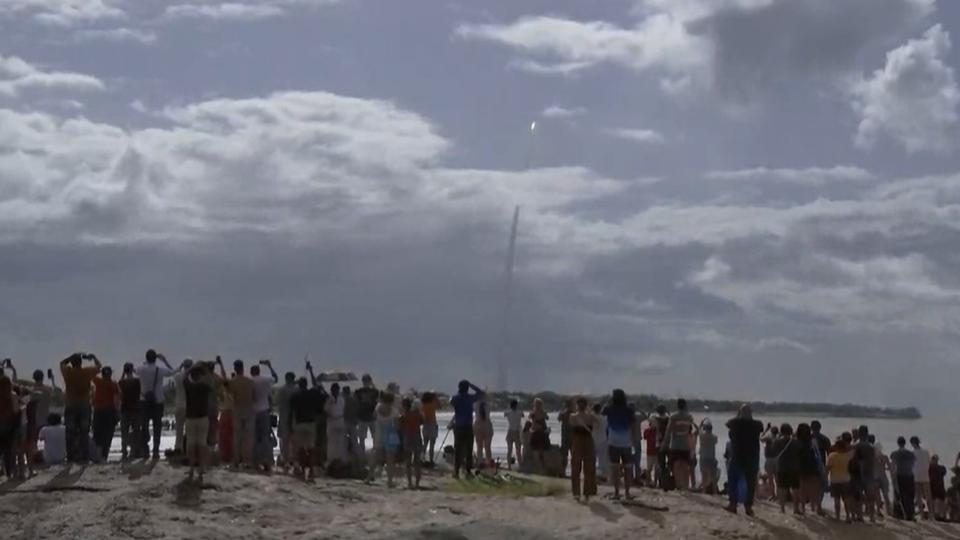

RELATED STORIES:
— The critical 7-minute engine of Ariane 6 aces the new European rocket
— Europe won’t have reusable rockets for another decade: report
— Watch Europe’s new Ariane 6 rocket fire up its engines in new time-lapse video
Start with 9 satellites
The Ariane 6 carried nine cubes into orbit today. All successfully deployed 370 miles (600 kilometers) above Earth about 65 minutes after liftoff as planned, European space officials said during a webcast of today’s flight.
Two of those passengers will be NASA’s Cubesat Radio Interferometry Experiment, or CURIE, which will try to find the source of the mysterious solar radio waves.
“This is a very ambitious and exciting mission,” said CURIE principal investigator David Sundkvist, a researcher at the University of California, Berkeley, in a NASA statement. “This is the first time ever that someone has flown a radio interferometer in space in a controlled way, so it is a beacon for radio astronomy in general.”
The other cubes will do a variety of work, from studying Earth’s climate and weather to measuring highly energetic gamma rays. You can learn more about them through ESA here.
Today’s flight also carried more scientific gear, including several experiments that remained attached to Ariane 6’s upper stage. The rocket was also supposed to deploy two experimental reentry capsules about two hours and 40 minutes into in flight. The aim of these two crafts was to show that they can survive the fiery journey home through the Earth’s atmosphere.
However, that did not happen; the Ariane upper stage did not complete 6 burns designed to set up that final deployment. This was due to a failure of the auxiliary power unit (APU), a device that pressurizes advanced fuel tanks during flight and provides additional thrust as needed, according to ESA.
“At one point in time, we controlled the APU. It reignited, and then it stopped,” ArianeGroup CEO Martin Sion said in a post-launch press conference today. “We don’t know why it stopped. This is something we will have to understand when we have all the details.”
But this anomaly, which occurred during the “technology demonstration” phase of the mission, should not detract from the overall success of the flight, he and other members of the mission team said during the briefing.
“We are now on track to make the second launch this year, in 2024, for the French Mod, and to carry out the next missions,” Arianespace CEO Stéphane Israël said during the press conference. “Therefore, it has no effect on the next launches.”
Note to the editor: This story was updated at 7:45 pm ET on July 9 with news of a successful cubesat deployment, the problem with the Ariane 6 upper stage and excerpts from the post-launch press conference.